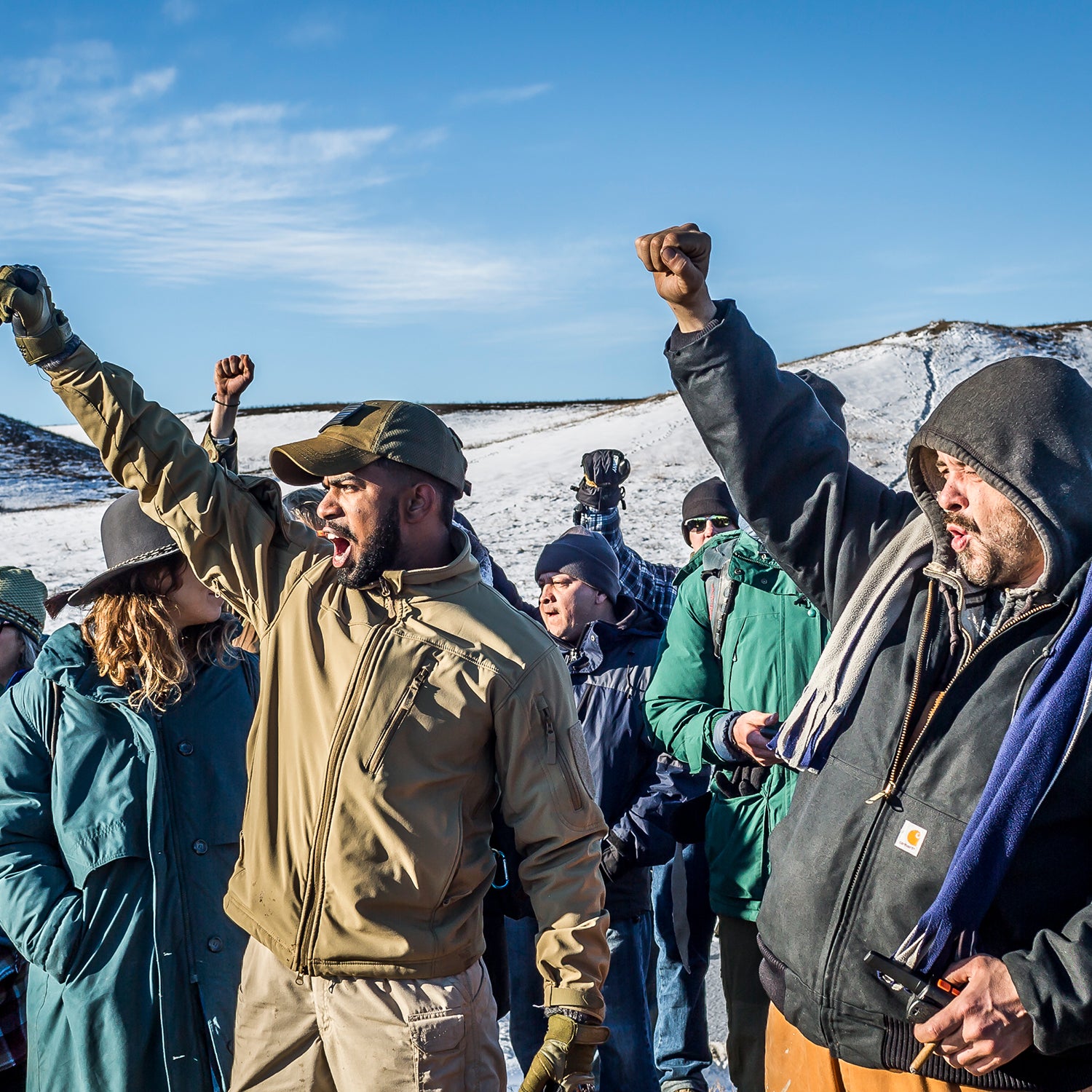Over��a span of two days earlier this week, there were three big wins for environmental groups fighting controversial natural gas pipeline projects. On Sunday, Dominion Energy canceled��the��Atlantic Coast Pipeline (ACP),��citing delays and rising costs. And on Monday, District Judge James E. Boasberg ordered a shutdown of the�� (DAPL) on the grounds that the U.S. Army Corps of Engineers had violated the National Environmental Policy Act by not adequately assessing the risks. The same day, the Supreme Court stayed an order to halt construction on the�� because it was in violation of the Endangered Species Act.
“It’s a weird time to feel cautiously optimistic,” says Tamara Toles O’Laughlin, North American director of the activist group��350.org. “You look around, the world is going to hell in a handbasket, and we’re winning on these pipelines.”
Opposition to all three pipelines has largely been led by the Indigenous and Black communities that would be hardest hit by the pipelines’ pollution and risk. For six years, the residents of Union Hill, Virginia, a town founded by freed slaves, fought an ACP that would have kicked toxic air pollution into their neighborhoods, filing suit against Dominion for the threat. More than a thousand miles away, at the Standing Rock Sioux��Reservation, DAPL protestors repeatedly stood their ground as rubber bullets and tear gas flew through the freezing air, physically holding their right to the land, as their lawyers brought suits about that��pipeline’s damages.��
The court decisions are a sign that, even in a political climate where the executive branch is pushing an aggressive, , energy-production agenda, shoddily planned, dangerous, and unnecessary fossil-fuel projects don’t hold up in the courts or at the banks. It’s a confirmation of the power of organizing��and of staying the course in the intertwined fight for racial and climate justice. “They’re all wins that wouldn’t have happened if people hadn’t gotten out into the street��to make it public,” says Dallas Goldtooth, Keep��It in the Ground��campaign organizer for the . “It shows you that this��works. It’s definitely a win for people.”
As the energy industry turns toward renewables, fossil-fuel prices are plummeting. And the courts have leaned into the durability and importance of environmental laws, even if they’re not perfect, even as President Trump has tried to weaken them. “In the back of my mind, I think the judges are finally saying, ‘We’re the last line,’” Goldtooth says. For the ACP, legal battles pushed the cost of an already tenuous, outdated model so high that Dominion had no choice but to give in. All these legal cases slow down the process and, ideally, make sure the voices of constituents are considered.
“It’s death by a thousand��cuts to a bad business model run by some folks who want to think it’s the eighties and are trying to make money on shortsighted schemes,” O’Laughlin says. This week is a culmination of decades of work to fight unnecessary pipelines, she says, but the movement hit a significant inflection point in 2016, at the��Standing Rock protest against the Dakota Access Pipeline. “It showed that you don’t have to wait for an invitation.��If you see the harm happening, you can do something,” she says.
Of course, energy companies are fighting back, arguing��that a liberal judge overstepped his bounds��and that��shutting down the DAPL, which is already running, would cost hundreds of jobs and billions of dollars in lost revenue.��
But the economic reality is that natural gas is becoming less necessary and those jobs could be better filled in a more sustainable industry, one that doesn’t threaten the community that supports it. Last month from the University of California at��Berkeley��found that 90 percent of U.S. electricity could be emission-free by 2035, in part by slashing natural-gas use by 70 percent.
That transition is a big part of why the ACP died on the vine. The country is moving on from natural gas. Patrick Hunter, a senior attorney at the Southern Environmental Law Center, says that Virginia and North Carolina, which were slated to receive the gas, already have a glut, and both states recently signed sweeping carbon-reduction goals, so there was no need and no desire. He says the legal battle made that clear, but most of their legal work was elevating the voices of the communities that would be impacted by the pipeline. “Without people caring about this, nothing happens,” Hunter��says. “When Dominion planned it, I think they thought they could steamroll and grease the political wheel, but that didn’t happen. I hope it inspires people to speak up. It shows that sometimes David can beat Goliath.”
Goldtooth says he knows that they have to maintain the pressure on the other two pipelines (he’s nervously awaiting a final ruling on Keystone XL, which was pushed back to the Ninth��Circuit Court of Appeals for further consideration). So even though he’s celebrating, he’s not relaxing.��
In the hell-bound handbasket that is the first half of 2020,��we’ve seen a��takeaway about persistence for more than just pipelines. This summer’s��rallies��against police violence and racial inequity are also tangible proof that collective action and a sustained protest movement can make a difference, but it has to come from more than just the people impacted, and they have to keep the pressure on.
“DAPL made people feel like they could run toward the problem,” O’Laughlin says. “In this movement, we’re starting to run in the same direction, but it’s important for people to remember that this is a marathon,��not a sprint.”


